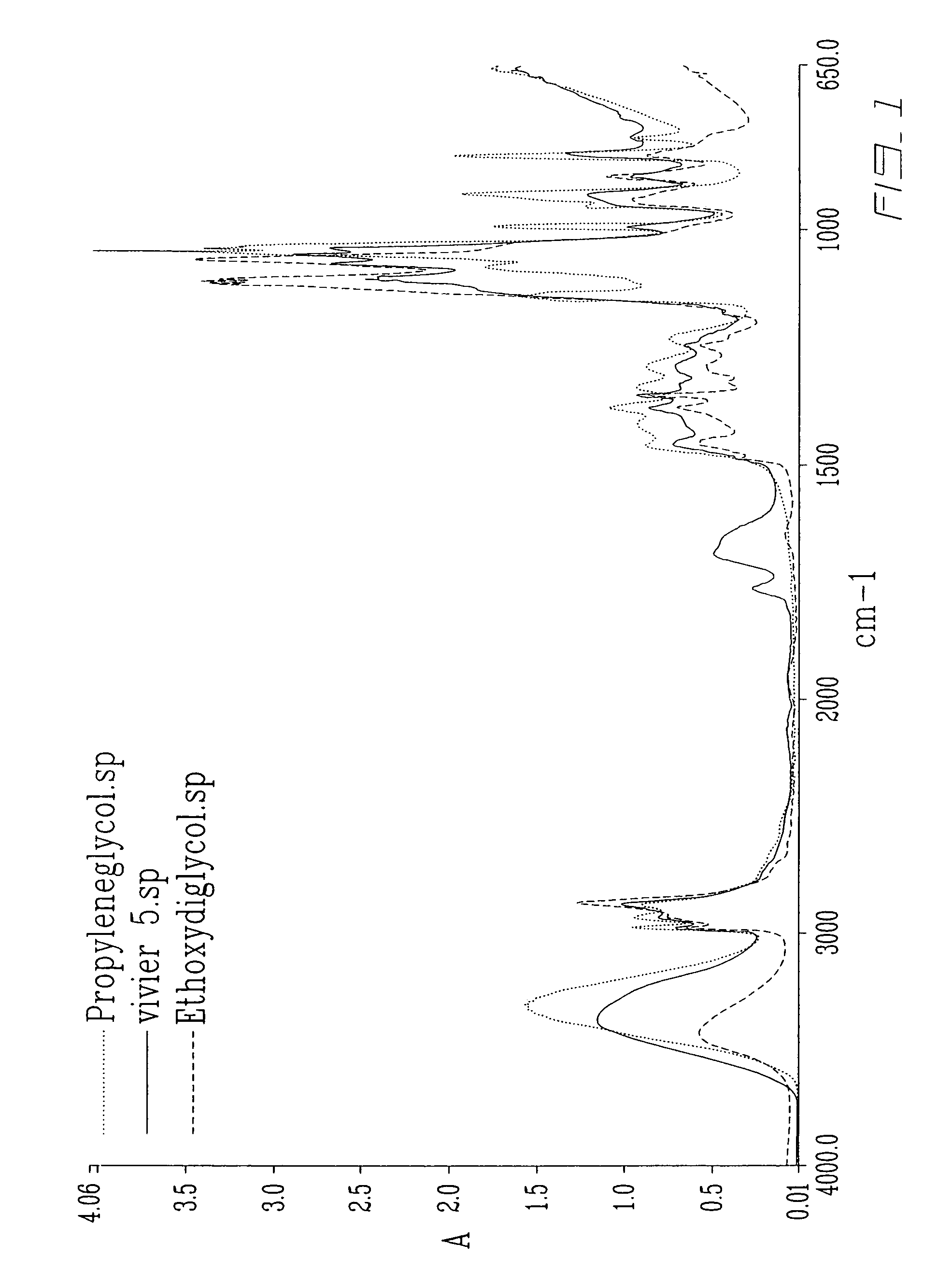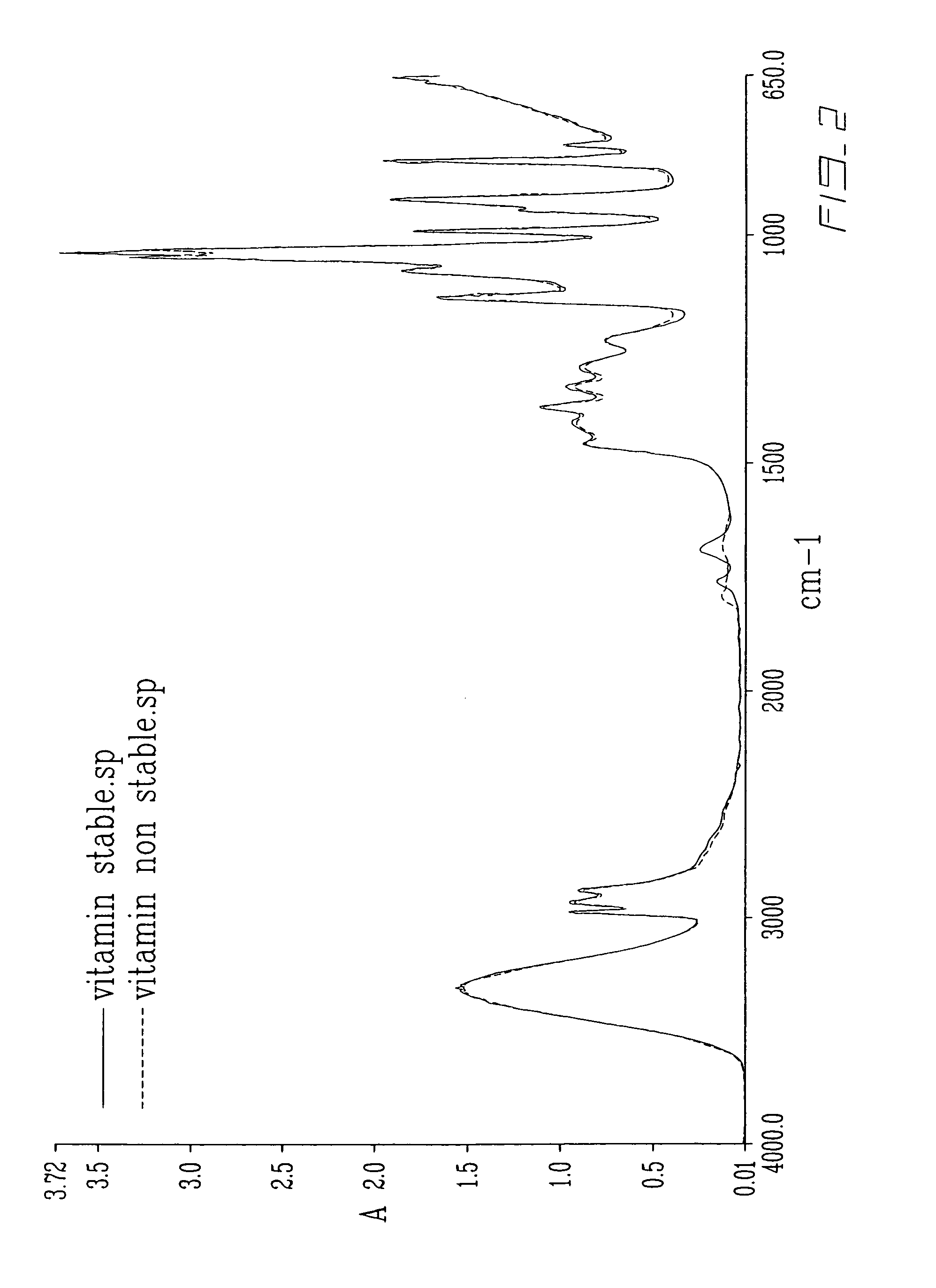Stabilized ascorbic acid solutions; use thereof; process for their obtention; and formulations comprising the same
a technology of ascorbic acid and stabilized ascorbic acid, which is applied in the direction of biocide, plant ingredients, non-active ingredients of pharmaceuticals, etc., can solve the problems of ros formation, unstable in aqueous solutions, and difficulty in maintaining antioxidant stability, etc., and achieves high stirring speed, high concentration, and high stirring speed
- Summary
- Abstract
- Description
- Claims
- Application Information
AI Technical Summary
Benefits of technology
Problems solved by technology
Method used
Image
Examples
example 1
Ascorbic Acid 5% (w / w):
[0033]Begin with 10.0% Demineralized water,[0034]add 3.00% L-Ascorbic Acid (Hoffman Laroche) and begin mixing at a medium to high speed (Lightning Mixer or Agitator) add 27.35% Ethoxydiglycol Trivalin SF™,[0035]add 2.00% Vitamin-C (Hoffman Laroche),[0036]add 27.35% Ethoxydiglycol Trivalin SF™,[0037]add 29.00% Propylene Glycol,[0038]add 1.00% Greentech™ Grapefruit Extract, and[0039]add 0.3% Apple Crunch™ Fragrance,[0040]Note: no heating is required.
example 2
Ascorbic Acid 10% (w / w):
[0041]Begin with 10.0% Demineralized water,[0042]add 3.00% L-Ascorbic Acid (Hoffman Laroche) and begin mixing at a medium to high speed,[0043]add 25.85% Ethoxydiglycol Trivalin SF™,[0044]add 1.50% Vitamin-C (Hoffman Laroche),[0045]add 25.85% Ethoxydiglycol Trivalin SF™,[0046]add 3.50% Vitamin-C (Hoffman Laroche),[0047]add 27.00% Propylene Glycol, and[0048]add 1.00% Greentech™ Grapefruit Extract.
[0049]Heat is then applied in the formulation process. This is an important step in order to formulate a concentration of vitamin-C higher than 6% in the solution comprising 10% water. Interestingly enough, the vitamin-C does not support heat well as the latter tends to oxidize the former. However, the medium in which ascorbic acid is during heating provides protection against oxidative damage.
[0050]Therefore, a last addition of 2% Vitamin-C is performed, followed by heating to 40 degrees Celcius until the solution becomes all clear and until all vitamin-C has been dis...
example 3
Ascorbic Acid 15% (w / w):
[0052]Begin with 15.0% Demineralized water,[0053]add 4.5% Vitamin-C (Hoffman Laroche) and being mixing at a medium to high speed,[0054]add 23.4% Ethoxydiglycol,[0055]add 2.25% Vitamin-C (Hoffman Laroche),[0056]add 23.4% Ethoxydiglycol Trivalin SF™,[0057]add 5.25% Vitamin-C (Hoffman Laroche),[0058]add 22.0% Propylene Glycol,[0059]add 0.09% Greentech™ Grapefruit Extract,[0060]and 3.0% Vitamin-C (Hoffman Laroche) and heat solution to 40 degrees Celcius until solution becomes all clear and when all vitamin-C has been dissolved
[0061]While stirring continues, the solution is cooled down and once cooled, 0.3% Apple Crunch™ Fragrance is added.
PUM
| Property | Measurement | Unit |
|---|---|---|
| solubility | aaaaa | aaaaa |
| water contents | aaaaa | aaaaa |
| temperature | aaaaa | aaaaa |
Abstract
Description
Claims
Application Information
 Login to View More
Login to View More - R&D
- Intellectual Property
- Life Sciences
- Materials
- Tech Scout
- Unparalleled Data Quality
- Higher Quality Content
- 60% Fewer Hallucinations
Browse by: Latest US Patents, China's latest patents, Technical Efficacy Thesaurus, Application Domain, Technology Topic, Popular Technical Reports.
© 2025 PatSnap. All rights reserved.Legal|Privacy policy|Modern Slavery Act Transparency Statement|Sitemap|About US| Contact US: help@patsnap.com


